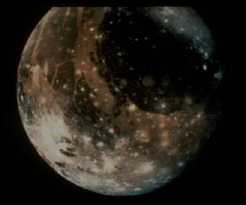This image shows the varied surface of Ganymede.
Click on image for full size
NASA
Surface of Ganymede
The surface of Ganymede is halfway between
Callisto and
Europa.
There are portions of the surface of Ganymede that have many craters, like Callisto and there are portions which are relatively new, and have no craters. This picture shows those two sides of Ganymede.
The little white dots are the many craters of Ganymede.
The surface of Ganymede shows grooves, light colors, and dark colors.
The many different kinds of surface found on Ganymede are proof that it has changed on the inside during it's history.
You might also be interested in:
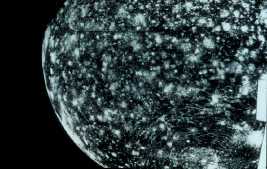
The surface of Callisto is deeply marked with craters. Craters are the little white marks in the picture. It looks like it might be the most heavily cratered body in the whole solar system. And some of
...more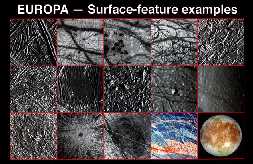
Many exciting discoveries were made about Europa during the Galileo mission. The surface of Europa is unusual, even for an icy moon. It appears that the surface is pretty new, rather than being ancient.
...more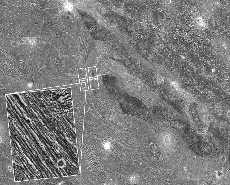
There has been no icy volcanism on Ganymede, nor continental drift, but it does seem that there have been movements of the surface. Examination of the surface of Ganymede reveals many kinds of faulting.
...more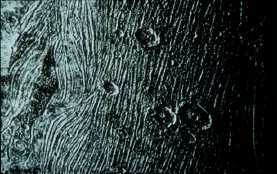
This image shows an example of the grooved terrain of Ganymede. The image clearly shows that some things hit Ganymede and made craters after the grooves were created, because the grooves are underneath
...more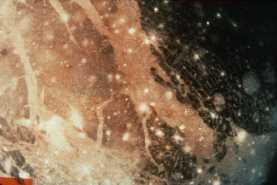
This image shows an example of the light terrain of Ganymede. The image shows the contrast between the light terrain and the dark terrain of Ganymede. The light terrain is where the grooves of Ganymede
...more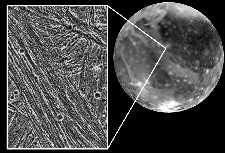
Instead of icy-volcanism, the surface of Ganymede reveals a gradual surface stretching which is similar to the crustal stretching of the Earth. In this case, the folding and stretching of the crust of
...more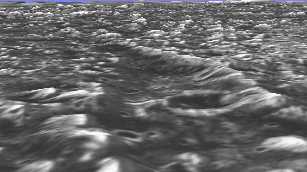
This image shows an example of the light terrain of Ganymede.
...more


